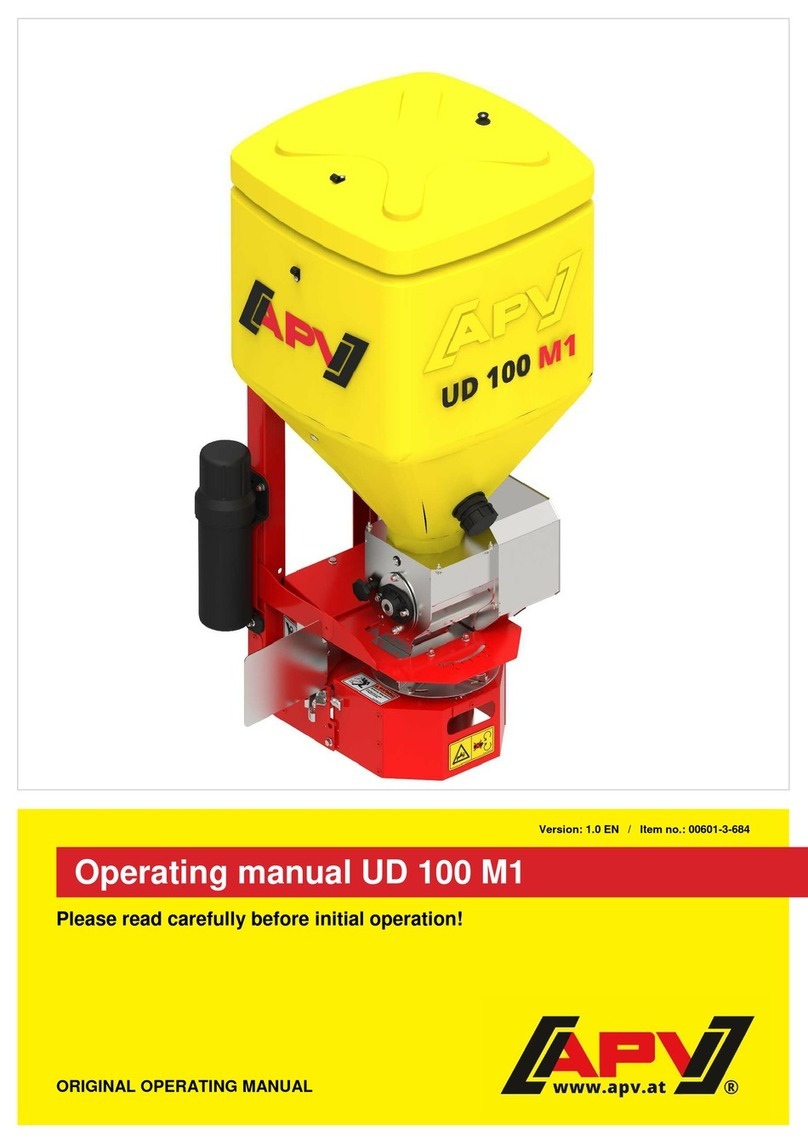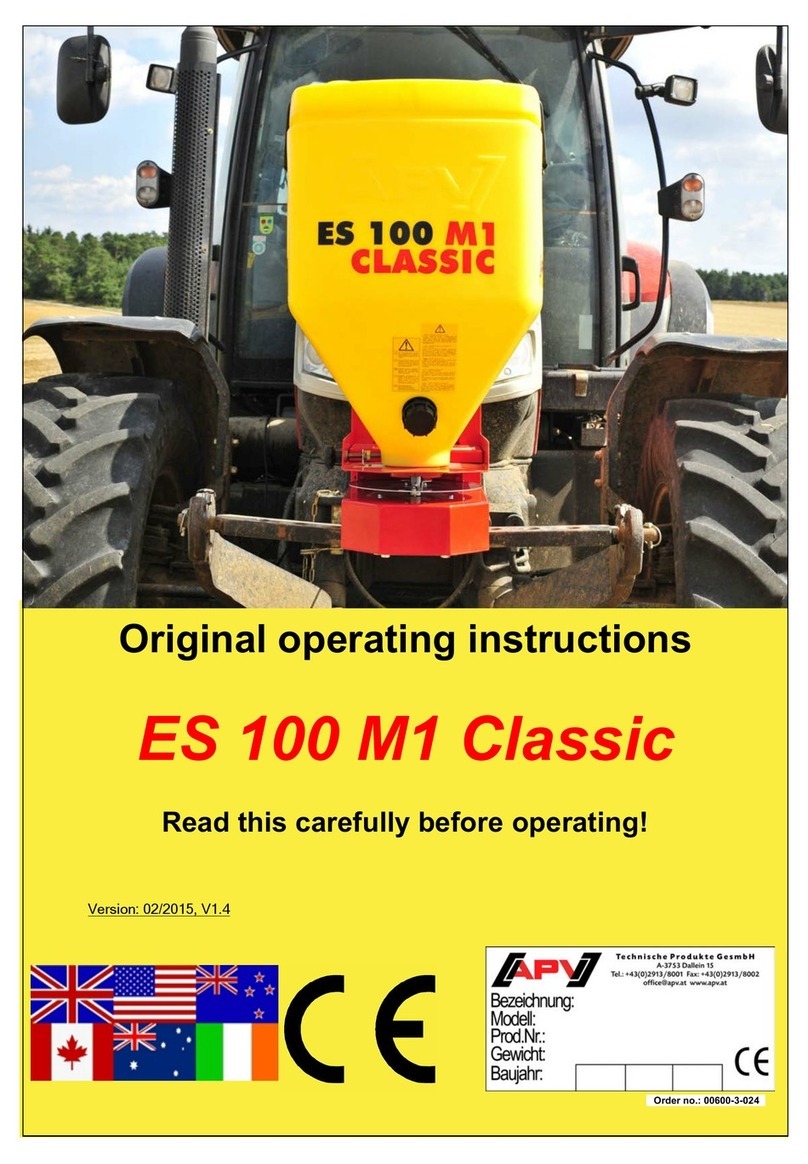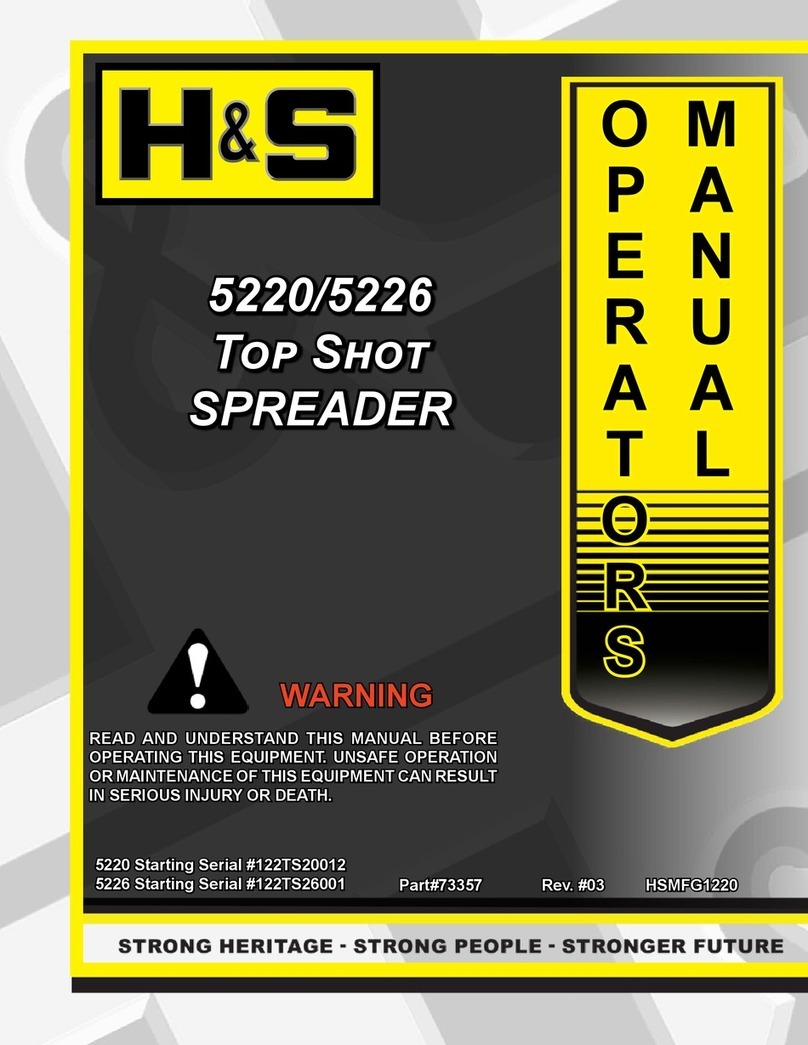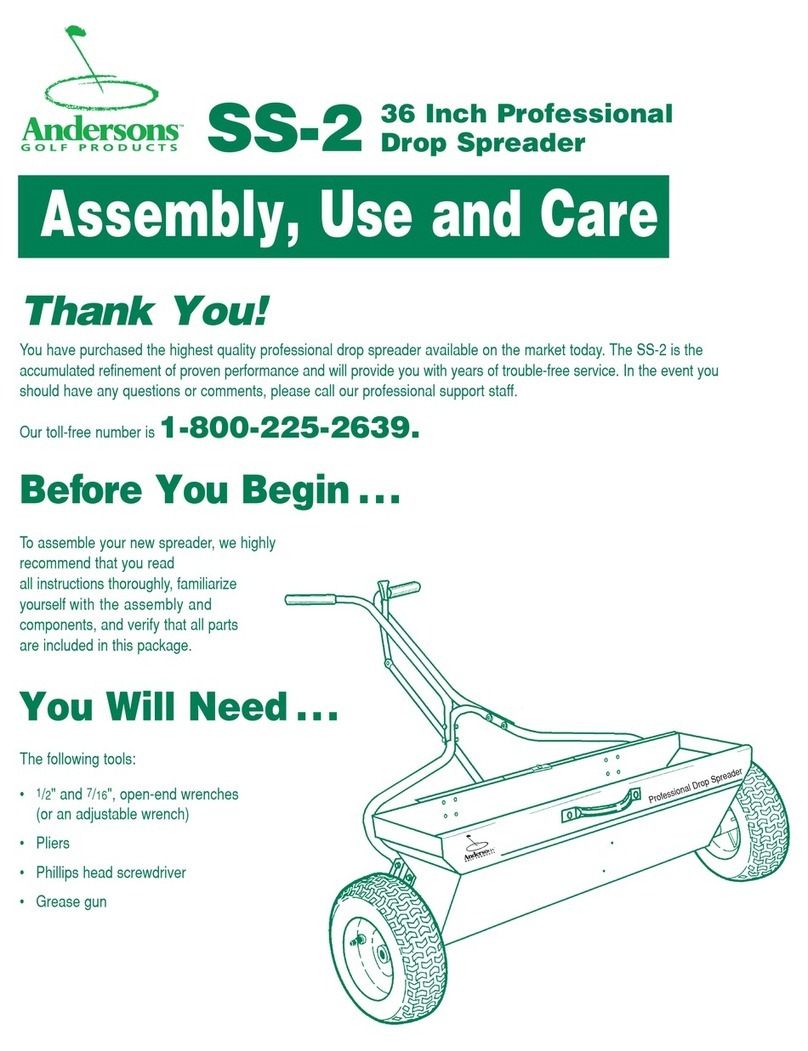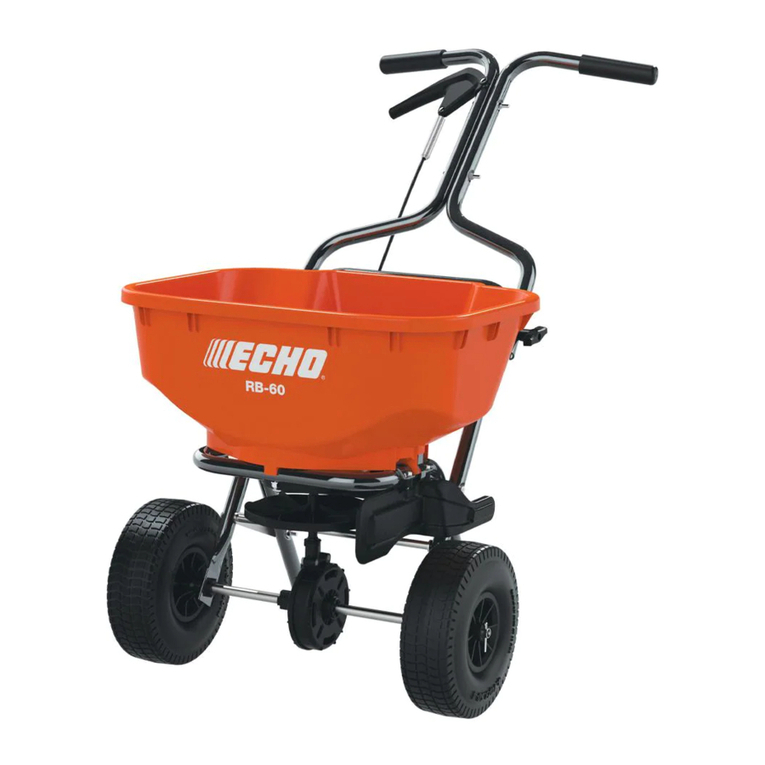
Page 6
•Use additional lighting (e.g., flashlight) for repair or maintenance work!
•The warning and information signs applied to the implement provide important instructions for safe
operation, observe them for the sake of your own safety!
•Observe the respective regulations when using public roads!
•Before starting work, get to know all of the equipment and operating elements as well as their
functions. It is too late to do so during operation!
•Hearing protection must be worn when using the implement.
•The spread rate may only be adjusted exactly according to the operating instructions and by trained
personnel!
•The user should wear close-fitting clothing. Avoid wearing loose clothes!
•Please always wear safety shoes with non-slip soles!
•To reduce the risk of fire, keep the machines clean. It is also recommended to carry a fire
extinguisher on the tractor.
•Check the surrounding area before starting up and operating the implement! (Children!) Ensure
sufficient visibility!
•It is not allowed to carry passengers on the implement during operation and transport!
•It is strictly forbidden to carry persons on any implement used to mount the universal metering unit.
•The implement must be coupled according to the instructions and only onto the specified devices!
•Special care must be taken when coupling and uncoupling implement to and from the tractor! Use
only self-locking attachments (nuts) as well as high-tensile bolts.
•Check the stability of the tractor and the implement when mounting, operating, and performing
maintenance / filling. Depending on the soil tillage implement on which the spreader is mounted, use
a step according to EN 14018 and according to the operating manual.
•When mounting the implement, the hydraulic connections to the tractor hydraulic system must be
connected carefully according to the operating manual.
•Always attach ballast weights at the intended attachment points according to the specifications!
•The instructions concerning mounting as well as the requirements for the tractor or agricultural
implement as specified in the operating manual are to be observed.
•Observe the permissible axle load, total weight and transport dimensions!
•Transport equipment, e.g. lighting, warning signs and any protective equipment, must be checked
and mounted!
•Triggers for fast couplers must be hanging loosely and must not trigger themselves when lowered.
•Never leave the driver's platform while driving!
•The driving behaviour, steering and braking capacity are also affected by mounted or towed
implements and ballast weights. For this reason, always ensure sufficient steering and braking
capacity!
•When driving in curves, take account of the wide radius and/or the centrifugal mass of the
implement!
•The implement may only be operated when all of the protective devices are installed and in safety
position!
•It is forbidden to stand in the working area of the implement!
•Do not stand near rotating and swivelling parts of the implement!
•Hydraulic folding frames may only be actuated when nobody is standing in the swivelling range.
•There are pinch and shear points on externally powered (e.g. hydraulic) parts!
•On implements with manual folding, always ensure that the implement is stable!
•For implements that are driven rapidly with soil-driven tools: Danger after lifting due to the still
rotating centrifugal mass! Only approach the implement when it has come to a standstill!
•Before exiting the tractor, lower the implement onto the ground, switch off the motor and remove the
ignition key!
•Standing between the tractor and the implement is forbidden unless the vehicle is secured against
rolling away using the parking brake and/or with wheel chocks!
•Folded frames and lifting devices must be locked in transport position!
•Packer catch arms must be swivelled in and locked before road transport!
•Lock the track markers in transport position!






